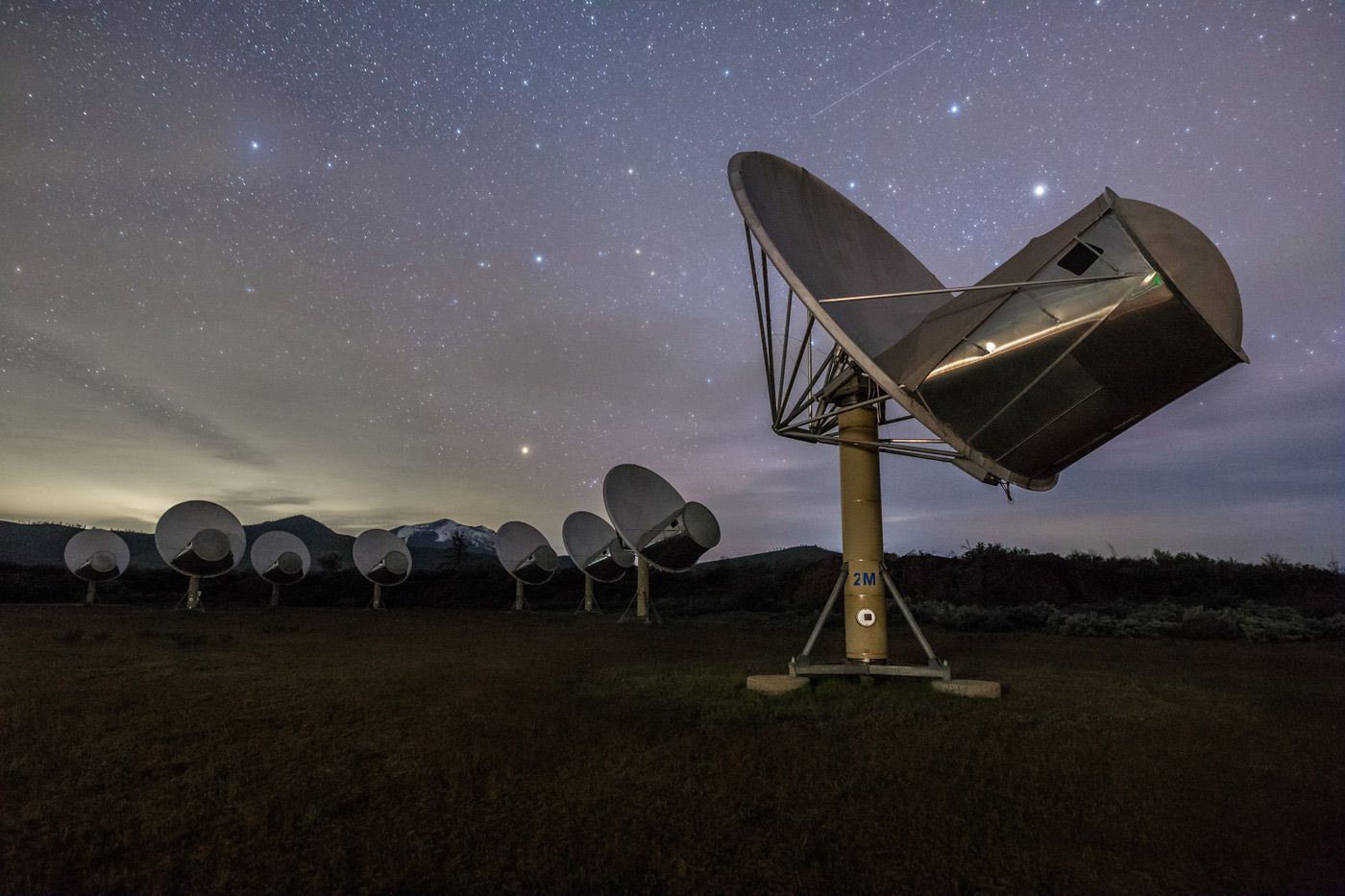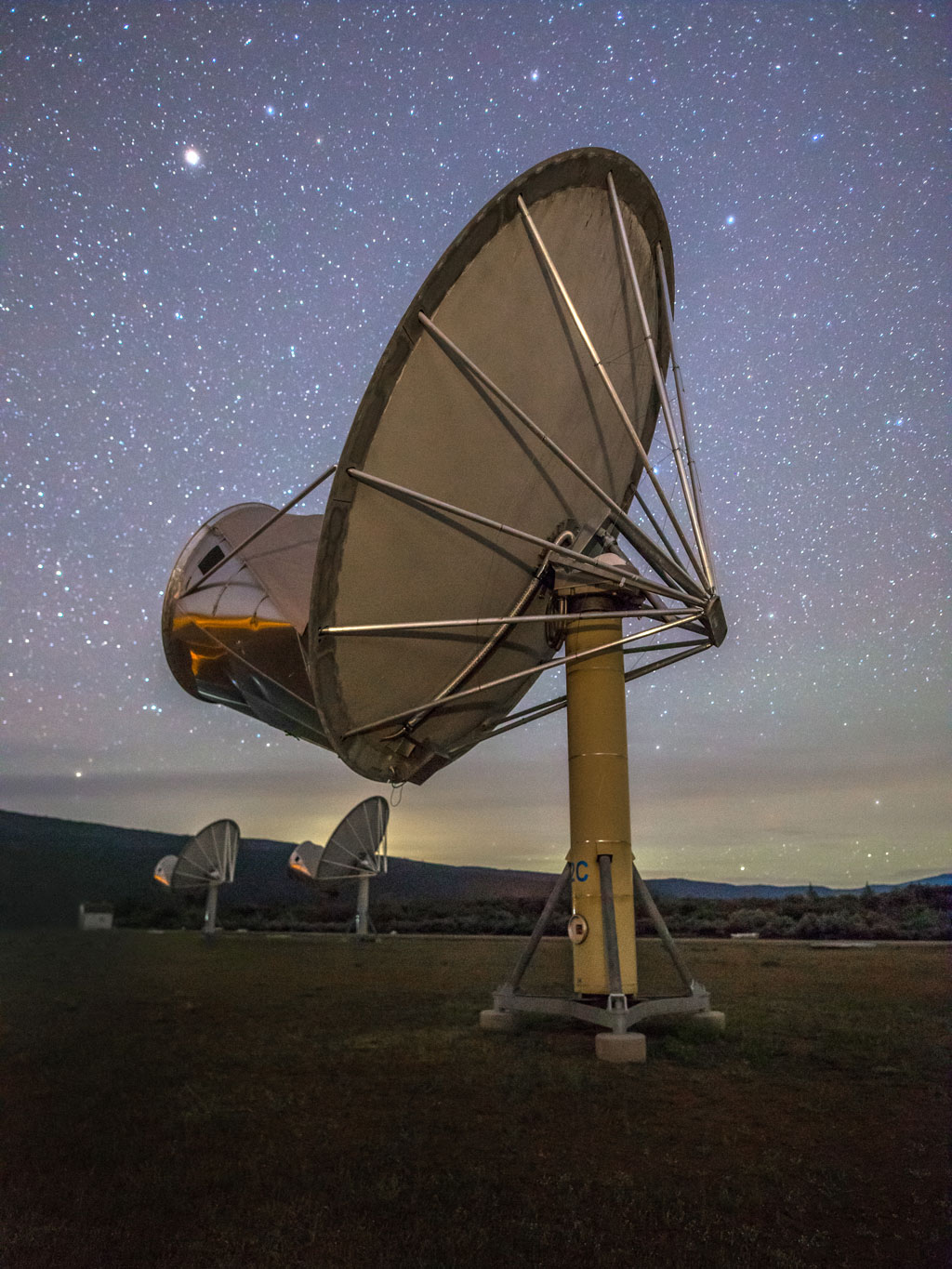ATA takes part in a global effort to observe and understand a massive gamma radio burst.

March 28, 2023, Mountain View, CA – A team of astronomers from the SETI Institute, Oxford University, and other institutions worked together to study the earliest stages of the Universe's most powerful explosions. The team was able to capture detailed information about a gamma radio burst (GRB) called the "Brightest of All Time" (BOAT), also known as GRB 221009A. The international team recorded radio emissions just three hours after the explosion, providing unparalleled insight into the jet's properties as it rapidly evolved. The research team included astronomers from the UK, USA, Australia, the Netherlands, Italy, and South Africa. They used data from radio telescopes worldwide, including the Allen Telescope Array (ATA), to investigate the violent interaction between the jet and circumstellar medium. These observations offer a rigorous testing ground for theoretical predictions about this interaction, and they provide valuable information for future rapid response instruments.
“It’s exciting to witness the ATA participating in a worldwide effort to study one of the most interesting and bright supernova explosions,” said Dr. Wael Farah, project scientist for the Allen Telescope Array. “We owe this success to the original specification of the ATA and the refurbishment program that transformed its analog and digital capabilities.”

The ATA was one of the first radio telescopes instruments to record data on this source, only a few hours after the event happened. Thanks to the rapid response from the ATA team and the unique capabilities of the ATA’s receivers and digital systems, the scientists been able to shed new light on the physical mechanisms at play in GRBs in unprecedented detail. In particular, the ATA observations, combined with higher frequency observations conducted with the Arcminute Microkelvin Imager Large Array (AMI-LA) telescope in the United Kingdom, provided the most detailed characterization yet realized of the “reverse shock” process in GRB explosions. The “reverse shock” is a back-propagating “echo” as the relativistic blast wave from the initial explosion slams into surrounding gas and dust.
The results showcase the effectiveness of the ATA as a fast follow-up machine for astrophysical phenomena, a spec that makes the telescope unique for astronomy (which includes SETI). The ATA has also joined a world-wide effort to study this interesting astrophysical source.
Two post-doctoral researchers from Oxford led the research, Dr. Joe Bright and Dr. Lauren Rhodes.
“GRB 221009A is a once in 10,000 years event and is allowing us to understand GRB physics in a way not possible previously,” said Lauen Rhodes.
“Our ability to rapidly respond to this event with a range of radio telescopes has been instrumental in understanding the early-time behavior of relativistic jets and demonstrates the importance of such observing flexibility when developing new facilities,” said Bright.
The most powerful explosions in the Universe occur because of the death of massive stars, heralding the formation of a black hole or neutron star. These so-called compact objects can facilitate the launch of highly collimated ejections moving close to the speed of light, known as a jet. Gamma-ray satellites, dedicated to the early discovery of such events via the detection of high energy bursts of radiation (known as gamma-ray bursts; GRBs), enable us to point other telescopes and study the interaction of the jet as it interacts with the material surrounding the dying star.
On October 9, 2022, the Fermi satellite detected the GRB of record-breaking brightness, GRB 221009A. This event was the perfect combination of being incredibly energetic and nearby, making it the ideal event for astronomers to study. The GRB community has been studying the BOAT for the past six months across the entire electromagnetic spectrum, from very low radio frequencies where disturbances were measured in the upper atmosphere up to teraelectronvolt energies, the highest energy photons ever detected from a GRB.
About the SETI Institute
Founded in 1984, the SETI Institute is a non-profit, multi-disciplinary research and education organization whose mission is to lead humanity’s quest to understand the origins and prevalence of life and intelligence in the Universe and to share that knowledge with the world. Its research encompasses the physical and biological sciences and leverages expertise in data analytics, machine learning and advanced signal detection technologies. The SETI Institute is a distinguished research partner for industry, academia and government agencies, including NASA and NSF.
Contact information
Rebecca McDonald
Director of Communications
SETI Institute
rmcdonald@seti.org





